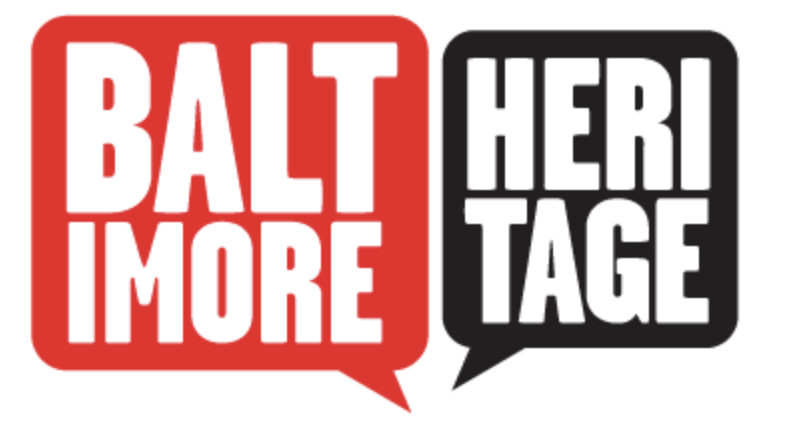Virtual Histories Series
FMOPL offered 30-minute presentations as part of the Virtual Histories organized by the Baltimore Architecture Foundation (BAF) and the Baltimore Heritage focusing on Baltimore architecture, preservation and history.



The Evolution of Windy Gates Estate and It's Olmsted Gardens
The Windy Gates country estate of the Jenkins family from 1882 to 1981 was the centerpiece of a much larger property that in its heyday, lolled down the rolling hills stretching along Lake Avenue from Roland Avenue to Falls Road. On the heels of their work on the Roland Park neighborhood to the south, the Olmsted Brothers were employed from 1902 through 1906, to do extensive landscaping design for the property, producing a detailed plan for the estate and specifications for approximately 150 different planting beds. When the heirs wished to sell the unique 20-acre property forty years ago, they offered a unique contest awarded to the developer presenting the most inspired and pleasing plan. Based on designs prepared by Peterson and Brickbauer Architects, the Azola Company was selected to redevelop the site into the Devon Hill Residential Community. They saved much of the historic landscaping, converted the historic Queen Anne-style country house and its carriage house and barns into condominium units and residential homes, and added additional residential buildings in keeping with the scale and historic character of the site. This presentation by Thom Rinker will draw on the extensive material, vintage drawings, and photographs found in the records of the Frederick Law Olmsted National Historic Site, the Library of Congress, the Smithsonian Archives of American Gardens, the Jenkins family archives, and the surveying firm of S.J. Martenet & Company. He will share unique insights into this Baltimore County treasure that still retains a quiet serenity and gentility over the landscape.
Western Electric Co.'s Point Breeze Plant & the Olmsted Vision
The Western Electric Company was founded in 1869 and served for more than 100 years as the manufacturing and supply unit of the Bell System. Its business and manufacturing activity skyrocketed from increased telephone use at the beginning of the 1900s. The company selected Baltimore as the site of a new cable and wire manufacturing plant due to its proximity to water and rail transportation. The company purchased land along the Patapsco River Neck from the Canton Company and the River View Amusement Park, with grand plans to develop the site into a large manufacturing campus. To complete a comprehensive plan for the new site at Point Breeze, the company hired the Olmsted Brothers firm. Between 1928 and 1931, the Olmsted Brothers prepared at least 263 drawings, including a comprehensive master plan and detailed landscape plans. Western Electric razed the amusement park to construct the Point Breeze plant, which was dubbed “The Playground That Went to Work.” The plant began operations in 1930 at the heart of the Depression. Likened to an “industrial city”, the plant included large-scale industrial buildings, a power plant, and a network of utility infrastructure and railroad tracks, along with enhancements for employees, such as a restaurant cafe, recreational facilities, landscaped gardens, tree-lined boulevards, and underground pedestrian tunnels.
The majority of the buildings were built in the Art Deco architectural style, and later buildings repeated some of those elements, providing visual and physical continuity throughout the complex. The collection of buildings, constructed between 1929 and 1970, is largely intact despite the Western Electric Company ceasing operations at the site in 1984. The peninsula now contains the Point Breeze Business Park and the Seagirt Marine Terminal.
The Olmsteds Lay the Foundation for Baltimore's Modern Park System
For 75 years the nationally-renowned Olmsted firm (father, son, and step-son) played a major role shaping the park system of Baltimore. During a period of rapid growth for the city, they provided comprehensive plans in 1904 and 1926 as well as specific recommendations and designs for park projects. Their legacy is evident in today’s park system.
Presenter:
Ed Orser is Professor Emeritus of American Studies at UMBC and former president of the Friends of Maryland’s Olmsted Parks & Landscapes (FMOPL) . He has taught and conducted research on the social and environmental history of Baltimore; his books include Blockbusting in Baltimore: The Edmondson Village Story and The Gwynns Falls: Baltimore Greenway to the Chesapeake Bay.
Olmsted Brothers Vision for Wyman Park and the Stony Run Stream Valley
Wyman Park and the Stony Run Stream valley demonstrate the premier design work of the Olmsted Brothers from 1903 to 1947. The influential landscape architecture firm was established in 1898 by brothers John Charles Olmsted and Frederick Law Olmsted Jr., sons of the eminent landscape architect Frederick Law Olmsted. The Municipal Art Society hired them to produce the City’s first comprehensive park system plan in 1904, the Development of Public Grounds for Greater Baltimore Report. The Wyman family had donated land for Johns Hopkins University in 1902 for use as a northern campus and that same year, the University gave the remainder of the land to the City of Baltimore to serve as a public park.
In the 1904 Report, the Olmsted Brothers identified Wyman Park, with its old beech trees and bold topography, as one of the finest single passages of scenery to be so near a large city and advocated for it to become a stream valley reserve and extended north and south Bookending the University to the southeast and fitting into the City grid is the intact Wyman Park Dell, a 16-acre public park noted for its steep enclosing slopes and a large, sweeping lower lawn, fully realized and conceived by the Olmsted Brothers. The presentation will focus on their vision and what remains today from Stony Run’s headwaters at the city’s northern border to where the stream joins the Jones Falls River to the south.
Jillian Storms, AIA, is an architect in the School Facilities Branch of the Maryland State Department of Education. She currently serves on FMOPL’s Board of Directors and the Archives Committee as well as on the Executive Board of the Baltimore Architecture Foundation (BAF) and co-chairs its research committee, the Dead Architects’ Society. She received BAF’s Roger Redden Award and Preservation Maryland’s George T. Harrison Volunteer Award in recognition of her extensive architectural research and public programming.
Patterson Park- The Jewel of Baltimore's Eastside
Patterson Park is an urban oasis – a beloved green space surrounded by brick rowhouses, diverse cultures and neighborhoods. Generations of Baltimoreans have picnicked under its tall tulip poplars, strolled the deeply curved paths and enjoyed the rich architectural design of this 137-acre East Baltimore park.
This presentation will touch on the park’s history, from its earliest beginnings as a 6-acre “Public Walk” donated to the city by William Patterson in April 1827, to its growth and development under the guiding hands of George A. Frederick, designer of City Hall, who served as Park Architect from 1863 to 1895, and of Charles H. Latrobe, who served as Engineer and General Superintendent of Parks from 1884 to 1902. Both were responsible for such impressive structures as the iconic Patterson Park Pagoda, a 60-foot tall Observatory built at top Hampstead Hill for its incredible views of the harbor and the city.
In 1904, the Olmsted Brothers Landscape Architects were hired to prepare a plan for the Eastern extension of the park. Their 1904 “Report Upon the Development of Public Grounds for Greater Baltimore” had urged for an expansion of the park to “offer the working people of East Baltimore a conveniently accessible body of refreshing scenery, retired to a great degree from the turmoil of the city.” The firm, founded by Frederick Law Olmsted, designer of Central Park, and continued by his sons, Frederick Law Olmsted, Jr. and John Charles, were the leading park architects of the day and continued to enhance the park’s design through 1915.
In Patterson Park, one can see the two sides of the Olmsted vision: the pastoral vistas and sweeping hills championed by the senior Olmsted and carried on by his sons, as well as the recognition by the younger Olmsteds of the features required by the active recreation movement of the period. The role of Patterson Park in creating social cohesiveness and quality of life is still paramount, nearly two centuries from its humble beginnings. This presentation will feature fascinating insights and rich historical imagery of this Jewel of Baltimore’s Eastside.
Presenter:
Tim Almaguer has been hiking through, learning from and working with urban parks for over 20 years, first with the Friends of Patterson Park for over 10 years and now as the Chief of Community Engagement and Strategic Partnership at Baltimore City Recreation and Parks. Tim received a Master degree in Recreation and Parks Management from Frostburg State University and wrote “Baltimore’s Patterson Park” in 2006, published by Arcadia Publishing.
The Olmsted Firm's Evolving Relationship with the Roland Park Company
Author Ann G. Giroux gave a Virtual History on “The Olmsted Firm’s Evolving Relationship with the Roland Park Company”. The Roland Park Company, headed by Edward H. Bouton, collaborated with the Olmsted firm on numerous projects both in and out of Baltimore’s historic Roland Park Company District. This professional relationship, which spanned several decades, produced dramatically different landscape treatments, reflecting Bouton’s growing experience, confidence and stature, evolving trends in suburban residential design, and financial considerations. This program will show through pictures and plans how the Olmsteds adapted their planning principles to meet Bouton’s requirements for the communities of Roland Park (1890s), Guilford (1910s) and Homeland (1920s).
Sudbrook Park
Baltimore: The Home of America’s Best Garden Cities (Charles Duff)
The Garden City Movement, devised by an odd London genius named Ebenezer Howard, has shaped most British development, and the best British development, for more than a century. Baltimore has more good examples of Garden City design and development than any American city. Join Charlie Duff to explore the English movement and the wonderful places where Baltimore architects and developers learned what the Garden City movement had to teach. Charlie has been exploring Anglo-American connections for a decade as he worked on his book The North Atlantic Cities, and he is delighted to know where Baltimoreans got the ideas for some of his, and our, favorite places.
Charles Duff is a planner, teacher, developer, and historian. Since 1987, Mr. Duff has been President of Jubilee Baltimore, a non-profit group that has built or rebuilt more than 300 buildings in historic Baltimore neighborhoods and is leading the development of the Station North Arts District. He has been President of the Baltimore Architecture Foundation and Chairman of the Board of the Patterson Park Community Development Corporation. A graduate of Amherst College and Harvard University, he lectures widely and has taught at Johns Hopkins and Morgan State. He co-wrote Then and Now: Baltimore Architecture in 2005 and contributed to The Architecture of Baltimore. His book The North Atlantic Cities has just been published.
Designs on Victory: Olmsted-inspired Garden City Plans for Historic Dundalk
The Bethlehem Steel Mill at Sparrows Point launched an effort to create a Garden City-style town in 1917 just before the US entered WWI. At the same time, the Federal Government began housing production for war workers. Frederick Law Olmsted, Jr. (FLO Jr.) headed the Town Planning division of the new United States Housing Corporation. Several colleagues in the nascent profession of city planning who had worked with FLO Jr. on Roland Park and Forest Hills Gardens were all directly involved in designing Dundalk, including Baltimore architect Edward Palmer, Roland Park Company leader Edward Bouton, and architects Grosvenor Atterbury and Charles Wellford Leavitt. Their plans were inspired by their designs for more affluent areas, including curvilinear streets, separation of uses, green spaces, and restrictive covenants. We will explore how these plans created a new community for workers and managers, but was segregated by race.
Presenters
Amy E. Menzer is a FMOPL Board member and serves as executive director of Dundalk Renaissance, a 20 year-old non-profit community development organization. She is deeply interested in planning history and neighborhood change. She previously worked for Citizens Planning and Housing Association on housing and transportation advocacy, and has served as President of the Community Development Network of Maryland, NeighborSpace Baltimore County, the Patterson Park Neighborhood Association, and the Transit Riders League of Metropolitan Baltimore. She holds a Ph.D in Human Geography from Johns Hopkins University.
Joining this presentation is Meg Fairfax Fielding, past president of BAF, and member of BAF’s Dead Architects’ Society. By day, Meg is the head of the History of Maryland Medicine at MedChi, which was founded in 1799, but on weekends, loves to explore Baltimore and the surrounding areas and take deep dives into the historical contributing architects, such as Palmer & Lamdin. Follow her on Instagram at PigtownDesign.
Five Minute Histories: John Eager Howard's Mt. Vernon
This series is called “Five Minute Histories.” Each day, Baltimore Heritage record a short video about a different historic place in Baltimore as we explore the origin of one of Baltimore’s most iconic (and delightful) places, John Eager Howard’s Mt. Vernon.
Wyman Park
This is series called “Five Minute Histories.” Baltimore Heritage records a short video about a different historic place in Baltimore
Leakin Park
Did you know that Leakin Park is the largest urban wilderness on the East Coast? Explore the history and preservation of this wild and beautiful landscape with us today! This series is called “Five Minute Histories.” Baltimore Heritage records a short video about a different historic place in Baltimore.
